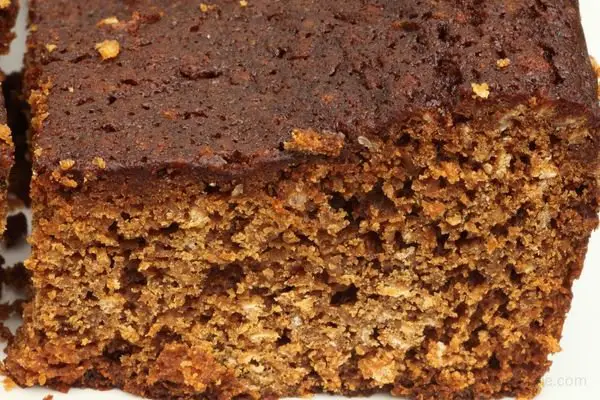Parkin Cake is a traditional gingerbread cake that originated in Northern England and is often enjoyed during Bonfire Night celebrations.
This delicious cake has a rich and flavorful history that dates back centuries and has become a beloved dessert throughout the United Kingdom.
In this article, we will delve deeper into the history of Parkin Cake and explore its cultural significance, traditional ingredients, and variations.

- The Origins of Parkin Cake: A Historical Overview
- The Traditional Ingredients of Parkin Cake
- The Cultural Significance of Parkin Cake
- Regional Variations of Parkin Cake
- How to Make Parkin Cake: A Step-by-Step Guide
- FAQs About Parkin Cake
The Origins of Parkin Cake:
A Historical Overview
Parkin Cake’s history can be traced back to the 18th century when it was first created by the working-class people of Northern England. Originally, Parkin Cake was a simple gingerbread cake made with oatmeal, treacle, and ginger. It was a cheap and filling dessert that could be made with readily available ingredients.
Over time, Parkin Cake evolved, and various regions in Northern England developed their own unique recipes. In some areas, honey replaced treacle as the sweetener, while in others, the addition of black pepper gave the cake a spicy kick.
The Traditional Ingredients of Parkin Cake
While there are many variations of Parkin Cake, some traditional ingredients remain the same. These include:
- Oatmeal: Rolled oats are a crucial ingredient in Parkin Cake and give it a unique texture and flavor.
- Treacle: A sweet, sticky syrup made from sugar cane, treacle is a key ingredient that adds sweetness and depth of flavor.
- Ginger: Ground ginger is the main spice used in Parkin Cake, giving it a warm and spicy flavor.
- Flour: Self-raising flour is used to provide structure to the cake.
- Butter: Unsalted butter is used to add richness to the cake.
- Brown Sugar: Brown sugar is used to give the cake its characteristic deep color and sweetness.
The Cultural Significance of Parkin Cake
Parkin Cake has a rich cultural significance in Northern England, particularly in Yorkshire. It is often associated with Bonfire Night, which commemorates the failed Gunpowder Plot of 1605, where a group of Catholics attempted to blow up the Houses of Parliament.
On Bonfire Night, people gather around bonfires, light fireworks, and enjoy traditional foods like Parkin Cake. In some areas, it is customary to eat Parkin Cake with a slice of Wensleydale cheese.
Regional Variations of Parkin Cake
While the traditional ingredients of Parkin Cake remain the same, there are many regional variations of the dessert. For example, in Lancashire, Parkin Cake is often made with black pepper, while in West Yorkshire, it is made with honey instead of treacle.
Other variations include adding nuts, raisins, or other dried fruits to the recipe. Some recipes call for the cake to be served warm with custard, while others suggest serving it cold with a cup of tea.
How to Make Parkin Cake:
A Step-by-Step Guide
Making Parkin Cake is easy and straightforward. Here is a basic recipe to get you started:
Ingredients:
- 200g medium oatmeal
- 100g self-raising flour
- 1 tsp ground ginger
- 1 tsp mixed spice
- 200g golden syrup
- 100g black treacle
- 100
FAQs
Yes, Parkin Cake can be made a day or two in advance. Just wrap it in plastic wrap or store it in an airtight container at room temperature.
Parkin Cake will keep for up to 5 days if stored in an airtight container at room temperature.
Yes, Parkin Cake can be frozen for up to 3 months. Just wrap it in plastic wrap and store it in the freezer.
